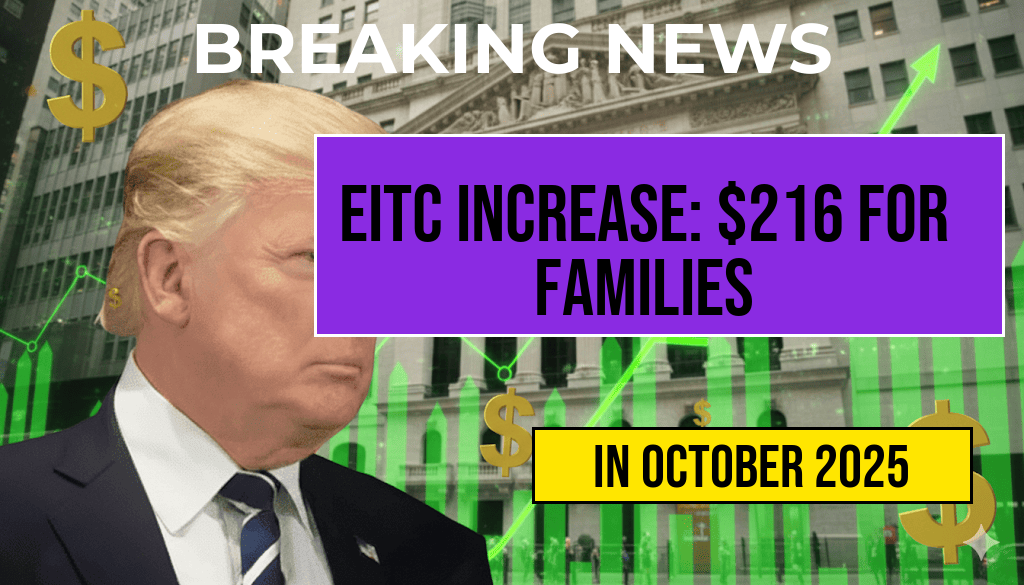The Earned Income Tax Credit (EITC) continues to serve as a critical financial support for low- and moderate-income families across the United States. Recent updates to the EITC have increased the maximum benefit for families with three or more children from $7,830 to $8,046, representing an additional $216. This adjustment aims to provide greater relief to larger families facing economic challenges, ensuring that the tax credit better reflects current living costs and inflationary pressures. The increase underscores ongoing efforts to bolster social safety nets, particularly for households with multiple dependents. While the overall maximum benefit remains below some previous levels, the incremental rise marks a targeted response to the needs of families with three or more children, who often face higher expenses related to housing, childcare, and education.
Understanding the Changes to the EITC
Background and Eligibility
The EITC is a refundable federal tax credit designed to supplement the earnings of low- and moderate-income workers, especially those with children. Eligibility depends on income level, filing status, and number of qualifying children. For the 2023 tax year, the IRS adjusted the credit amounts to account for inflation, following a trend of annual updates aimed at maintaining the benefit’s real value.
Maximum Benefit Increase
For families with three or more qualifying children, the maximum EITC has been increased from $7,830 to $8,046. This change translates into an additional $216 in potential tax relief, which can significantly influence household budgets, especially for those managing multiple dependents.
Impacts on Large Families and Economic Relief
| Year | Maximum EITC Benefit | Increase |
|---|---|---|
| 2022 | $7,830 | – |
| 2023 | $8,046 | $216 |
The increase may seem modest at first glance but can have meaningful effects on family finances. For example, a family of five earning within the eligible range might see their tax refund grow, providing extra funds for essentials such as rent, utilities, or childcare. Larger families often face compounded expenses, making even small increases in tax credits impactful.
Policy Rationale and Broader Context
Policy analysts argue that the adjustment aligns with broader efforts to reduce child poverty and support economic stability for vulnerable households. The Congressional Budget Office (CBO) emphasizes that targeted increases in tax credits like the EITC are effective tools for promoting economic mobility and reducing reliance on social safety net programs.
Additional Considerations and Future Outlook
Potential for Further Adjustments
Some advocates are calling for more substantial increases and reforms to make the EITC more accessible and equitable. Discussions include expanding eligibility criteria, increasing the maximum benefit further, and simplifying the filing process to ensure more families can benefit from the program.
Impact of Inflation and Economic Conditions
With inflation continuing to affect household expenses, the importance of adjusting social safety net programs like the EITC becomes even more critical. The recent increase reflects an attempt to keep pace with rising costs, but ongoing economic shifts may necessitate future adjustments.
Resources and Support
- For more information on eligibility and filing, visit the IRS EITC page.
- To explore broader social safety net programs, consult the Wikipedia overview of social safety nets.
Frequently Asked Questions
What is the maximum Earned Income Tax Credit (EITC) for families with three or more children in the latest update?
The maximum EITC for families with three or more children has increased to $8,046 compared to the previous $7,830, providing an additional $216 in benefits.
Who qualifies for the increased EITC amount?
Families with three or more children who meet income and filing requirements are eligible for the maximum EITC of $8,046.
How does the new EITC amount compare to previous years?
The updated EITC amount of $8,046 is an increase of $216 from the prior maximum of $7,830, offering greater financial support to qualifying families.
What are the main benefits of the increased EITC for larger families?
The increase provides larger families with more financial assistance, helping to offset costs associated with raising children and supporting economic stability.
How can families apply or find out if they qualify for the increased EITC?
Families should file their taxes and consult the IRS guidelines to determine eligibility for the EITC. Using tax software or consulting a tax professional can help ensure they receive the correct benefits.







